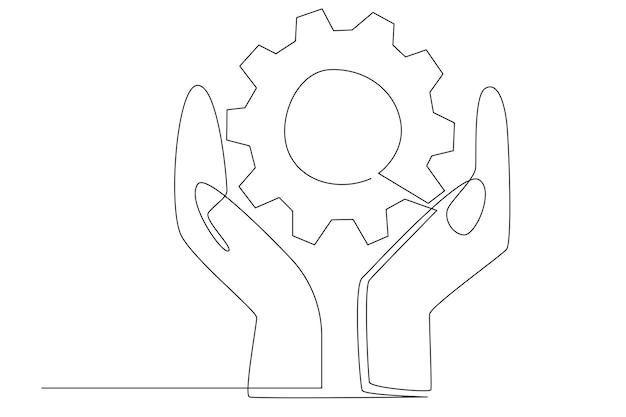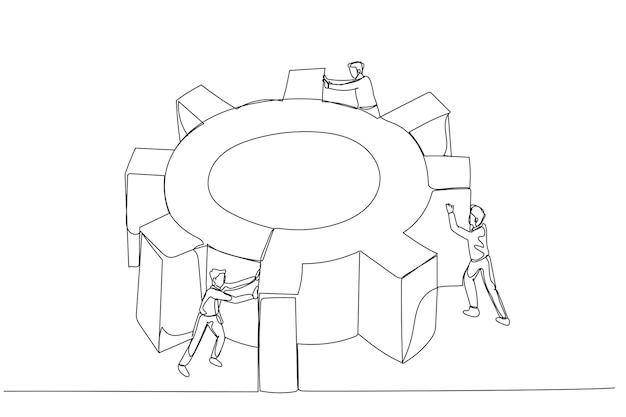Are you looking to increase the productivity and motivation of your employees? One solution could be to improve their engagement levels- but where do you start? With so many theories and models out there, it can be overwhelming to know which to choose.
In this blog post, we will explore Kahn’s three dimensions of employee engagement and how they can be applied to your workplace. We will also discuss the different models of employee engagement, including the X model, and provide helpful resources such as work engagement PDFs.
So, what exactly is the definition of employee engagement? And how can it be measured? These questions and more will be answered as we dive into the topic of employee engagement theories and models.
By learning about Kahn’s model of employee engagement, you can gain valuable insights into the way your employees work and what motivates them. So, grab a cup of coffee, settle in, and let’s begin exploring the world of employee engagement together.
Understanding Kahn’s Model of Employee Engagement
In today’s fast-paced world, businesses are continuously looking for ways to improve employee engagement levels. One method that has gained popularity and success over the years is the Kahn’s model of employee engagement. This model has been widely accepted throughout the business world as a reliable tool for developing levels of employee engagement.
What is Kahn’s Model of Employee Engagement
Kahn’s model of employee engagement is a framework designed by William Kahn, a professor at Boston University. The model was developed by studying the work behavior of employees in different organizations. It focuses on finding ways to increase employee engagement by providing them with meaningful work experiences.
The model suggests that there are three core psychological conditions that employees require to feel engaged in their work:
Meaningfulness
This condition refers to the employee’s sense of personal belief in the value and purpose of their work. When a job is meaningful, employees feel like they are contributing to something that is important and worthwhile.
Safety
This condition refers to employees’ feelings of physical, emotional, and psychological safety. It means that they feel comfortable to express their thoughts, opinions, and ideas without fear of repercussions.
Availability
This condition refers to employees’ access to resources, knowledge, and other support that is necessary for them to complete their work effectively.
How does Kahn’s Model help in Improving Employee Engagement
Kahn’s model of employee engagement is designed to encourage businesses to focus on creating a work environment that allows employees to meet the three key psychological conditions for engagement. The model identifies four drivers that businesses can use to encourage employees to meet these core psychological conditions –
Job Resources
This driver refers to the provisions of resources such as training opportunities, mentorship, and career progression.
Organizational Support
This driver involves creating a supportive organizational culture that enables employees to feel recognized and valued.
Autonomy
This driver involves giving employees the freedom to work independently to make decisions regarding their work.
Fairness and Equity
This driver refers to ensuring that all employees are treated fairly and equitably, regardless of their position in the company.
By focusing on these four drivers, businesses can create a work environment that fosters employee engagement and provides a sense of fulfillment at work.
In conclusion, Kahn’s model of employee engagement is a helpful tool for businesses looking to increase employee engagement levels. By fostering a work environment that addresses the core psychological conditions and leveraging effective driver strategies, businesses can create a culture of engagement that will drive success and growth.
Work Engagement PDF
Research has shown that engaged employees lead to better business outcomes, including increased productivity and profitability. Therefore, understanding and enhancing employee engagement is a top priority for many organizations. One model that is gaining popularity among HR professionals is Kahn’s model of employee engagement. This model defines engagement as the psychological connection employees have with their work, colleagues, and organization. However, understanding the concept of engagement can be challenging. Luckily, there are resources available, including Kahn’s original work and other helpful PDFs.
Understanding Kahn’s Model
Kahn’s model of employee engagement has three components: meaningfulness, safety, and availability. Meaningfulness refers to the extent to which employees understand how their work contributes to the organization’s goals and objectives. Safety refers to the level of psychological safety employees feel in the workplace, including the freedom to express their opinions and ideas. Availability refers to the extent to which employees are physically, cognitively, and emotionally available to do their work.
The Benefits of Employee Engagement
Engaged employees are more likely to be productive, innovative, and committed. They are also less likely to experience burnout or turnover. By investing in engagement, organizations can create a positive work environment, build strong employee relationships, and improve overall business performance.
Employee Engagement PDFs
PDFs can be a great resource for HR professionals looking to enhance employee engagement. From academic articles to practical guides, there are numerous options available. For example, the Society for Human Resource Management (SHRM) offers a variety of free PDFs on their website, including “Creating a Positive Work Environment” and “Employee Engagement: Your Competitive Advantage.” Additionally, academic journals like the Academy of Management Journal, Journal of Organizational Behavior, and Journal of Applied Psychology, have published research on employee engagement that can be accessed through library subscriptions.
In conclusion, employee engagement is a critical factor in organizational success, and a model like Kahn’s can help companies understand and enhance this concept. Utilizing resources like PDFs can be a valuable tool to help HR professionals develop best practices and strategies to create a positive work environment and build employee engagement.
Employee Engagement Theories and Models
When it comes to employee engagement, there are several theories and models that organizations can adopt, each with its own set of strengths and weaknesses. In this section, we’ll take a closer look at some of the most well-known employee engagement theories and models.
Job Demands-Resources Model
The Job Demands-Resources Model, or JD-R Model, is a popular model that proposes that there are two broad categories of job characteristics that can influence employee engagement: job demands and job resources. Job demands include factors such as workload, time pressure, and physical exertion, while job resources include things like autonomy, social support, and learning opportunities.
Herzberg’s Two-Factor Theory
Herzberg’s Two-Factor Theory is another popular model that proposes that there are two types of factors that influence employee satisfaction and engagement: hygiene factors and motivators. Hygiene factors include things like salary, working conditions, and job security, which, if not met, can lead to job dissatisfaction. Motivators, on the other hand, include factors like recognition, responsibility, and personal growth, which can enhance job satisfaction and motivate employees to perform at their best.
Maslow’s Hierarchy of Needs
Maslow’s Hierarchy of Needs is a well-known theory of human motivation that proposes that individuals have a hierarchy of needs that must be met in order for them to be engaged and satisfied in the workplace. The hierarchy is typically represented as a pyramid, with the most basic physiological needs (such as food, water, and rest) at the bottom, followed by safety needs, social needs, esteem needs, and finally, self-actualization needs.
Kahn’s Model of Employee Engagement
Finally, we come to Kahn’s Model of Employee Engagement, which we’ll explore in more detail in the next section. This model proposes that engagement is fundamentally a psychological state, characterized by three distinct conditions: meaningfulness, safety, and availability. According to Kahn, when employees experience these conditions, they are more likely to feel engaged and motivated in their work.
In the next section, we’ll delve deeper into Kahn’s Model of Employee Engagement and explore how it differs from other employee engagement theories and models.
Kahn’s 3 Dimensions of Employee Engagement
When it comes to employee engagement, one model that truly stands out is Kahn’s model. This model was developed by William Kahn, a professor at Boston University, and it’s based on three dimensions that influence the level of engagement of an employee.
The Three Dimensions
The first dimension is related to the psychological presence of an individual. It is about the sense of being, and it implies that an employee must feel connected with the work they do. If an employee doesn’t feel a sense of belonging, the level of engagement will be lower.
The second dimension is related to the emotional connection that an employee has with the job. This dimension implies that an employee must feel emotionally connected and invested in the work they do. This connection must be built through experiences and positive feedback from supervisors.
Finally, the third dimension is related to the value that an employee places on the work they do. It’s about the employee’s belief in the importance of the work they do and how it contributes to bigger objectives. If an employee perceives their work as valuable, they’ll be more engaged.
Benefits of the Model
Kahn’s model has proven to be effective in predicting the level of employee engagement. By analyzing the three dimensions, managers can identify the areas where they need to focus on to ensure employees are psychologically present, emotionally connected, and value their work.
By understanding these dimensions, managers can improve the work environment, enable employees to have a greater sense of purpose, and foster a positive workplace culture. This, in turn, leads to increased employee engagement, productivity, and employee retention.
Kahn’s model provides a comprehensive approach to employee engagement. By focusing on the three dimensions of psychological presence, emotional connection, and value, managers can help employees feel more engaged and invested in their work. This ultimately leads to better business outcomes and a more positive work environment. So next time you’re thinking about employee engagement, take a leaf from Kahn’s book and consider the three dimensions of engagement.
Kahn 1990 Employee Engagement Definition
In 1990, William Kahn, an organizational psychologist, introduced the concept of employee engagement. According to his definition, employee engagement is “the harnessing of organizational members’ selves to their work roles; in engagement, people employ and express themselves physically, cognitively, and emotionally during role performances.”
At its core, employee engagement is all about how invested an employee feels in their job, their team, and the organization as a whole. It’s a measure of their passion and commitment to the work they do, as well as their sense of belonging in the workplace.
Kahn’s definition highlights three key components of employee engagement:
Physical Engagement
Physical engagement refers to an employee’s willingness to put forth effort and energy in their work. Employees who are physically engaged are motivated to go above and beyond their job requirements to get the job done.
Cognitive Engagement
Cognitive engagement refers to an employee’s level of focus, concentration, and absorption in a task. Engaged employees are mentally immersed in their work, able to tune out distractions and give their full attention to the job at hand.
Emotional Engagement
Emotional engagement refers to an employee’s feelings toward their job and the organization. Engaged employees are emotionally invested in their work and take pride in the accomplishments of their team and the organization as a whole.
In summary, Kahn’s model of employee engagement recognizes the importance of engaging employees not just on a physical level, but also on a cognitive and emotional level. By cultivating an environment that fosters engagement in all three areas, organizations can create a culture of passionate, committed employees who are fully invested in their work.
What is Employee Engagement Model Theory
Employee engagement model theory is a concept that aims to describe the relationship between employees and their workplace. The theory tries to explain how companies can create an engaging work environment that fosters productivity, motivation, and loyalty among employees. Employee engagement refers to the level of commitment and emotional involvement that employees have towards the organization’s objectives and values.
Definition of Employee Engagement Model Theory
Employee engagement model theory is a framework that helps managers understand how to improve employee engagement in the workplace. The model is a roadmap that outlines the necessary steps to create a work environment that is conducive to high employee engagement. The theory suggests that employee engagement is essential for organizational success as it helps to improve employee retention, satisfaction, and performance.
Importance of Employee Engagement Model Theory
Employee engagement model theory is essential for organizations that want to build a motivated and productive workforce. The theory helps organizations to understand the drivers of engagement and how to leverage them to create an environment that fosters employee engagement. Additionally, employee engagement model theory is an effective tool for measuring the level of engagement within an organization. Measuring employee engagement aids in identifying areas that require improvement and implementing interventions that enhance engagement.
Key Elements of Employee Engagement Model Theory
Several key elements comprise employee engagement model theory. The first element is leadership. Leaders play a crucial role in creating an environment of engagement by setting an example and providing direction. The second element is communication. Effective communication is necessary for building trust and creating a sense of purpose among employees. The third element is recognition. Employees need to feel recognized and valued for their contributions to the organization. The fourth element is training and development. Providing employees with opportunities for growth and development helps to improve engagement.
Employee engagement model theory is an effective tool for creating and maintaining a motivated and productive workforce. By understanding the drivers of engagement and implementing the necessary interventions, organizations can improve employee engagement and achieve their objectives. Successful implementation of employee engagement model theory requires commitment, leadership, effective communication, recognition, training, and development.
What is the X Model of Employee Engagement
Employee engagement has been gaining popularity in recent years as companies seek ways to improve their workforce’s productivity. One of the popular models used to enhance employee engagement is the X model.
What is the X model
The X model is an employee engagement model developed by Kevin Kruse. Unlike other models that focus on employee satisfaction and happiness, this model focuses on the employee’s connection to the company’s purpose and values. The X model aims to create a sense of ownership and purpose for the employees, which translates to better performance and engagement.
The Four Elements of the X model
The X model consists of four elements: vision, enablement, empathy, and engagement. Let’s take a closer look at each element.
Vision
The vision is the company’s purpose, values, and mission. The X model emphasizes that employees must understand and connect with the company’s vision. When employees understand the company’s mission and values, they work towards achieving that vision, which leads to engagement.
Enablement
Enablement involves providing employees with the necessary tools and resources to achieve the company’s goals. When employees have access to the right resources, they feel empowered and capable of contributing to the company’s vision.
Empathy
Empathy involves creating a work environment that values and respects employees. The X model emphasizes treating employees like human beings and not just resources. When employees feel valued and respected, they are more likely to be engaged.
Engagement
Engagement is the final element of the X model. The model emphasizes creating a work environment that inspires and motivates employees to give their best. Employee engagement involves creating a sense of ownership and purpose for employees, which leads to better performance.
The X model is an effective model for enhancing employee engagement. By focusing on vision, enablement, empathy, and engagement, companies can create a work environment that inspires and motivates employees to give their best. The X model goes beyond employee satisfaction and happiness and emphasizes creating a sense of ownership and purpose for employees.
What are Kahn’s 3 dimensions of engagement
Kahn’s model of employee engagement focuses on three main dimensions: psychological meaningfulness, psychological safety, and psychological availability.
Psychological Meaningfulness
Psychological meaningfulness involves an employee’s belief that their work is significant and meaningful. In other words, it’s about understanding the bigger picture and how their job fits into achieving organizational goals. If employees feel their work has a purpose and contributes to something bigger, they are more likely to be engaged.
Psychological Safety
Psychological safety is all about creating a work environment where employees feel comfortable to take risks and share their opinions without fear of consequences or ridicule. When employees feel safe and supported, they are more likely to be engaged and innovative in their work.
Psychological Availability
Psychological availability refers to an employee’s willingness and ability to perform in their role. This relates to an employee’s physical, emotional, and mental state. If an employee is tired, stressed, or distracted, they are unlikely to perform at their best. Employers need to ensure employees have everything they need to perform effectively, such as training, resources, and support.
In conclusion, understanding Khan’s three dimensions of employee engagement is vital for employers looking to improve their staff’s overall wellbeing and performance. By promoting psychological meaningfulness, safety, and availability at work, employees are more likely to feel valued and connected to their organization.
What are the 4 Models of Employee Engagement
Employee engagement has become an essential aspect of human resource management, and every organization strives to create a positive work experience for its employees to improve their productivity and job satisfaction.
Here are the four main models of employee engagement:
1. Kahn’s model of employee engagement
Dr. William M. Kahn is the originator of the Kahn’s model of engagement, which defines engagement as the emotional and intellectual commitment of an employee to their work. The model identifies three dimensions of engagement: psychological meaningfulness, psychological safety, and psychological availability.
2. Gallup’s model of employee engagement
Gallup’s model of employee engagement emphasizes the significance of an employee’s connection with their work team and supervisor. The Gallup model identifies 12 elements of engagement that contribute to an employee’s emotional connection with their work environment.
3. Hewitt’s model of employee engagement
Hewitt’s model of employee engagement is based on the notion that employees are more likely to experience engagement when their employer has a clear vision, mission, and values that are consistently communicated and demonstrated throughout the organization.
4. BlessingWhite’s model of employee engagement
BlessingWhite’s model of employee engagement is based on a pyramid hierarchy, suggesting that engagement can only be achieved after fulfilling certain needs such as basic, emotional, and intellectual. The model identifies four key drivers of engagement: connection, context, capability, and contribution.
In conclusion, gaining an understanding of these four models can help organizations develop an effective engagement strategy that can enhance employee satisfaction, productivity, and retention.



